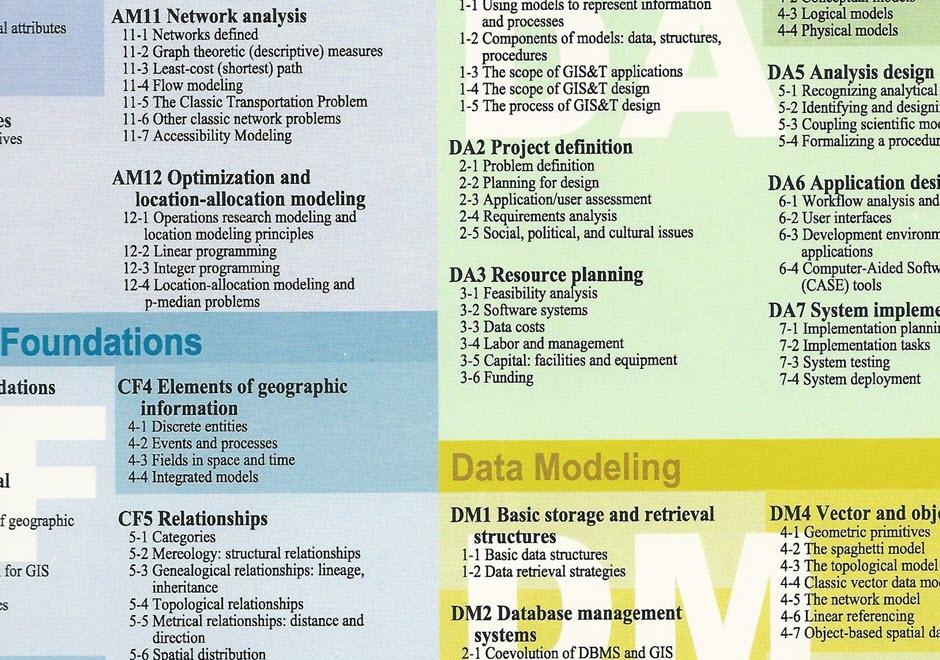CF1-3 - Philosophical perspectives

- Define common philosophical theories that have influenced geography and science, such as logical positivism, Marxism, phenomenology, feminism, and critical theory
- Identify the philosophical views and assumptions underlying the work of colleagues
- Describe a brief history of major philosophical movements relating to the nature of space, time, geographic phenomena and human interaction with it
- Compare and contrast the kinds of questions various philosophies ask, the methodologies they use, the answers they offer, and their applicability to different phenomena
- Evaluate the influences of one’s own philosophical views and assumptions on GIS&T practices
- Defend or refute the statement, “All data are theory-laden”


CF2-1 - Perception and cognition of geographic phenomena